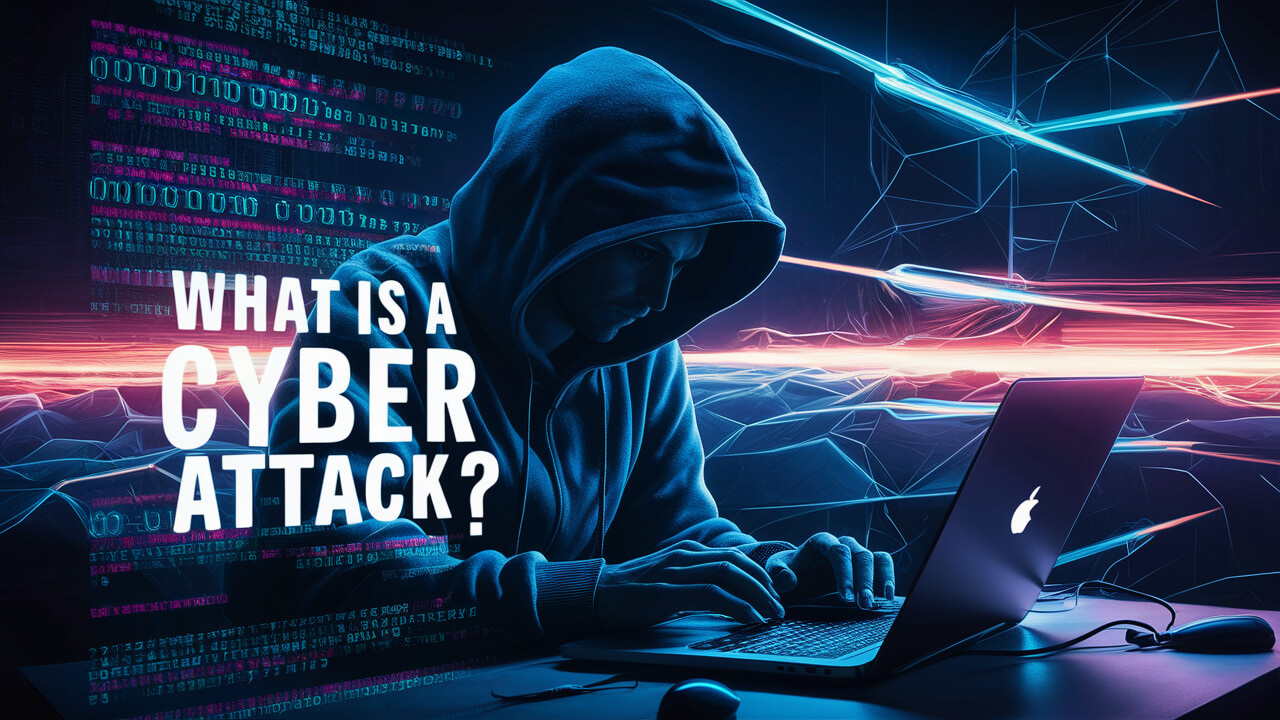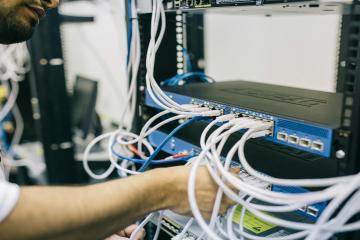
The threat of cyber-attacks has become a widespread concern. These attacks have become a significant threat frequently resulting in data breaches, service disruptions, and financial losses.
In short, a cyber attack is a malicious attempt to compromise the security, privacy, or availability of digital systems, networks, or data. It includes various activities performed by hackers, cybercriminals, state-sponsored groups, and other illegal organizations who exploit software, hardware, and human behavior vulnerabilities to achieve their objectives.
In 2022, 493.33 million ransomware attacks were identified by organizations worldwide. Phishing is still the most common computer attack, with about 3.4 billion daily spam emails. In 2022, stolen credentials cost $4.50 million per breach.
The healthcare industry has been the costliest for breaches for 12 consecutive years, with an average data breach cost reaching $10.10 million in 2022.
This guide will explain the cyber attacks, the evolving threat landscape, trends, and preventive measures for cyber attacks.
What is a Cyber Attack?
A cyber attack is any planned and fraudulent attempt to exploit faults in computer systems, networks, or software applications, to gain unauthorized access, lead to harm, steal sensitive information, or interrupt normal operations.
Types of Cyber Attack
Cyber attacks occur in various forms, targeting different aspects of an organization's digital infrastructure. Some common types of cyber attacks include:
Malware Attacks
Malware is a term used for various harmful software, which includes spyware, ransomware, viruses, and worms. Malware breaches a network by installing risky software after users click a dangerous link or email attachment. Once the software gets into the system, it can do the following:
- Blocks access to the network's most important parts (ransomware)
- Installs malicious software or other dangerous apps
- Spyware takes data from the hard drive to get information without being noticed
- Messes up some parts of the system and stops it from working
Phishing Attacks
Phishing is sending fake messages that look like they came from a trusted source, usually sent through email. The goal is to take private information like credit card and login information or to place malware on the person's device. Phishing is a cyber threat that is becoming more popular.
Denial of Service Attacks (DoS)
A denial-of-service attack attempts to overwhelm a network or system with too much traffic, making it impossible for authorized individuals to access it. A Distributed Denial of Service attack (DDoS) involves a network of hacked devices coordinating the attack.
Man-in-the-Middle Attacks
Man-in-the-middle (MitM) attacks, or eavesdropping attacks, happen when cyberattackers connect themselves into a two-party transaction. Once the criminals interrupt the process, they can sort and take the data.
Two common MitM entry points:
- Attackers can get between a visitor's device and the network if the public Wi-Fi is unsafe. The user needs to be aware to give the attacker all the information.
- Once malware enters a device, an attacker can install software to handle the victim's information.
SQL Injection Attacks (SQL)
An SQL injection occurs when an attacker introduces malicious code into a server that employs SQL and forces the system to reveal data it usually would not. An attacker could perform SQL injection by entering malicious code into a vulnerable website search box.
Zero-Day Exploits
A zero-day exploit takes benefit of software vulnerabilities that are not yet known to the supplier or the public. Cybercriminals exploit these vulnerabilities before they are patched, making them particularly dangerous. Zero-day vulnerability threat detection needs constant awareness.
Cyber Attacks in News
Cyberattacks cost businesses billions of dollars under normal business conditions. The 2022 Russia-Ukraine war worsened these issues with politically motivated cyber attacks. Here are some of the cyber attacks:
Massive Cyberattack by “FIN7” Group
The US financial services organization was attacked by a group of cyber attackers called "FIN7." They stole millions of bank and credit card customers' information.
Kaseya Attack
The IT company Kaseya was hacked by a group called "REvil." The hackers entered Kaseya's systems and secured the data on its users' computers. For the data to be unlocked, the hackers asked for a fee of $70 million.
Ransomware Attack
A ransomware attack on Colonial Pipeline drove the organization to shut down the whole pipeline, which brought gasoline and other fuels to the East Coast of the US. Fuel was in short supply, and prices increased because of the attack.
Cyber Attack Trends
Cyberattack trends change rapidly. Here are the latest trends in the cyber threat landscape.
AI-Powered Attacks
As artificial intelligence (AI) and machine learning (ML) technologies advance, cyber attackers utilize their power to create advanced and targeted attacks.
AI can automate and optimize different stages of cyberattacks, such as identifying weaknesses, developing convincing phishing emails, escaping security measures, and even learning from protective measures to improve future attacks. This arms race between AI-powered attacks and AI-driven cybersecurity is expected to escalate.
Insider Threats and Employee Manipulation
Insider threats are now more than just dissatisfied employees. Cyber attackers increasingly use social engineering strategies to manipulate employees into unknowingly assisting their schemes.
Employees are often tricked into giving out private information, clicking on dangerous links, or even sending money to fake accounts using phishing attacks, pretexting, and baiting. Insider threats are a significant risk because attackers exploit people's trust in their employees.
Identity Theft and Credential Stuffing
Since many data breaches have exposed personal information, hackers have a lot of tools to use in attacks like identity theft and credential stuffing. Stolen credentials are used to gain unauthorized access to accounts, systems, and networks.
Credential stuffing attacks exploit users who repeat passwords using stolen usernames and passwords on different platforms. Multi-factor authentication adoption is a countermeasure, but attackers continue to refine their techniques.
Supply Chain Attacks 2.0
Building upon the supply chain attack trend, attackers are now focusing on more than just software vulnerabilities. Hardware supply chain hacks are very dangerous because they involve adding harmful portions to devices while they are being made.
Critical infrastructure supply chain weaknesses allow attackers to indirectly gain unauthorized access or compromise systems by targeting suppliers and contractors.
Critical Infrastructure Targeting
Attacks on critical infrastructure, such as power grids, water supplies, and transportation systems, continue to be a significant threat. Cybercriminals and officials know compromising these systems could cause chaos and economic disruption.
Stuxnet and the 2015 Ukraine power outage were early examples, and the trend continues with more advanced attacks on such targets.
Internet of Things (IoT) Vulnerabilities
As the number of IoT devices continues to grow, so does the number of ways hackers can attack. Many IoT gadgets don't have good security, which makes them easy to hack. These devices can create botnets for DDoS attacks or as points of entry into more extensive networks. Mirai and Reaper are two examples of software that targets IoT devices and has caused a lot of trouble.
Quantum Computing Threats
While still in its early stages, the advent of quantum computing brings promises and threats to cybersecurity. Quantum computers can break encryption methods that are currently impossible to break. This could make private data less secure.
Organizations need to prepare for the time after quantum computing by creating secure methods that can't be damaged by quantum computing.
Cryptojacking and Cryptocurrency-Related Attacks
While the hype around cryptocurrency has subsided, cryptojacking attacks persist. Without the user's permission, bad players use computer resources to mine cryptocurrency. Also, attacks on Bitcoin markets, wallets, and transfers have become more sophisticated because these are still valuable targets.
Cyberattacks are Preventable
The statement "A cyberattack is preventable" is generally valid to some extent, but it's essential to learn that complete prevention of all cyberattacks is challenging, if not impossible.
Cyberattacks are done by hackers who frequently alter their methods and take advantage of gaps in software, systems, and individuals. However, organizations and individuals can take proactive measures to reduce the risk of cyberattacks significantly. Here are some significant points to consider:
Cyber Hygiene
Good cyber hygiene includes updating software, using strong and unique passwords, enabling two-factor authentication (2FA), and being careful of suspicious emails, links, and downloads.
Security Measures
Systems and networks can be kept safe using strong security measures like firewalls, attack detection systems, antivirus software, and device security solutions.
Regular Training
Educating employees, users, and other stakeholders about best practices for safety is essential. This means teaching them to spot spam, social engineering, and other standard attack methods.
Patch Management
Ensuring all software and running systems have the latest security changes is essential. Many hacks take advantage of vulnerabilities that have already been fixed.
Network Segmentation
Separating networks and data can limit the impact of a potential breach. If an attacker gets into one part of the network, they won't be able to get into the rest instantly.
Incident Response Planning
Having an accurate incident response strategy can help minimize the damage in the event of a cyberattack. Identifying roles, responsibilities, communication procedures, and attack prevention and recovery steps.
Encryption
Encrypting sensitive data at rest and in transit adds an extra layer of protection. An attacker won't be able to read the data without the encryption keys.
Regular Backups
Regularly backing up critical data and systems allows you to restore them without paying a ransom or suffering major interruptions in an attack.
Vendor and Supply Chain Security
Ensure third-party providers and partners have good protection practices since hackers can use them to enter your system.
Continuous Monitoring
Implementing continuous monitoring systems assists in recognizing and responding to suspicious activities in real time, allowing you to take action before a breach occurs.
Real-Life Hypothetical scenario
A multinational company offering businesses and consumers a wide range of products and services worldwide. They store massive amounts of sensitive customer, research, and financial data on their servers.
Attack Timeline:
Initial Reconnaissance: A group of skilled hackers begins surveying the company's digital infrastructure. They identify potential vulnerabilities through publicly available information and dark web sources.
Phishing Campaign: The hackers start a particular hacking operation. They pretend to be senior executives or trusted partners and send convincing emails to several employees. Employees who click on the links or files in these emails install malware on their computers.
Malware Infection: A few unaware employees fall for the phishing emails and unknowingly activate the malware. Malware allows attackers to operate laterally and explore the company's network.
Escalation: With their initial access, the hackers boost their authority and search for valuable data. They take over more employee accounts, steal passwords, and enter essential systems like the company's database, which contains customer information and intellectual property.
Data Exfiltration: To avoid detection, the attackers carefully extract sensitive data in small, private sections. They hide their tracks by using encryption and anonymization. This makes it hard for the company's security team to notice that the breach is still going on.
Ransomware Deployment: The attackers spread ransomware across the company's network as a last blow. They secure important files and systems, which stops the company from running. They leave a note asking for a lot of money as payment for the access key.
Discovery and Response: The company's security team notices unusual activity on the network and starts to look into it. They discover the breach, encrypted systems, and ransom notes. The company decided to involve law enforcement agencies and cybersecurity experts.
Containment and Recovery: With the help of cybersecurity providers, the company separates the systems that have been hacked, gets rid of the malware, and starts to restore protected data from backups. Recovery could be faster and easier, causing downtime and financial losses.
The hacker group that made the attack is found through forensic research.
Public Relations and Rebuilding Trust: The breach becomes public knowledge, damaging the company's reputation. They rebuild trust by improving cybersecurity, data protection, and identity theft protection for affected customers.
The Role of Cybersecurity Providers and Third-Party Services
Organizations must proactively adopt cybersecurity measures as the threat landscape evolves to protect their assets, data, and reputation. This is where Cybersecurity Services Providers play an essential role.
These providers specialize in creating, executing, and managing cybersecurity strategies specific to an organization's needs. Here's why partnering with a cybersecurity provider is essential:
Expertise and Experience
Cybersecurity providers specialize in figuring out the evolving threat landscape. Their expertise, experience, and tools enable them to identify vulnerabilities, assess risks, and implement effective organizational defense strategies.
24/7 Monitoring and Incident Response
Cyber attacks can occur at any time. Cybersecurity providers constantly monitor systems and networks, helping rapidly detect suspicious activities. In a breach, their incident response teams can immediately reduce the impact, minimizing interruptions and damage.
Cutting-Edge Technology
Staying ahead of cyber attackers needs access to the latest cybersecurity technologies and approaches. Organizations can utilize cutting-edge tools for safeguarding against new dangers by partnering with cybersecurity providers.
Compliance and Regulations
Many sectors are subject to strict data protection regulations. Cybersecurity providers know compliance requirements and can help organizations comply with laws to avoid legal and financial consequences.
Resource Efficiency
Building a defense team in-house can take a lot of time and money. Outsourcing cybersecurity services allows companies to get expert help without worrying about hiring, training, and regular maintenance.
Scalability
As a business grows, its cybersecurity requires modifications. Cybersecurity providers offer solutions that can be changed to meet various requirements and provide consistent safety.
Focus on Core Competencies
By outsourcing cybersecurity services, companies can focus on what they do best and let pros handle the complicated cybersecurity tasks.
Future Consideration
The interconnectivity of devices, systems, and critical infrastructures increases cyber threats. As technology advances, so do the instruments and strategies utilized by hackers, requiring a proactive and adaptive approach to cybersecurity.
Combining AI and machine learning could make finding and dealing with threats easier, but it could also make AI-driven attacks possible. Finding a balance between innovation and monitoring will be crucial, with global cooperation and reliable standards assisting as the foundations in safeguarding our digital future.
Final Thoughts
The frequency of cyber-attacks demands a proactive and diverse approach to cybersecurity. Organizations must partner with cybersecurity providers or subscribe to third-party cybersecurity services to protect sensitive data, maintain operational continuity, and maintain reputation.
These professionals' expertise, experience, and cutting-edge tools can help organizations defend against the evolving threat landscape and secure their digital future. The world of cybersecurity is vast and ever-changing, but with the right partnerships, organizations can stay ahead of cyber attackers and stay competitive.



